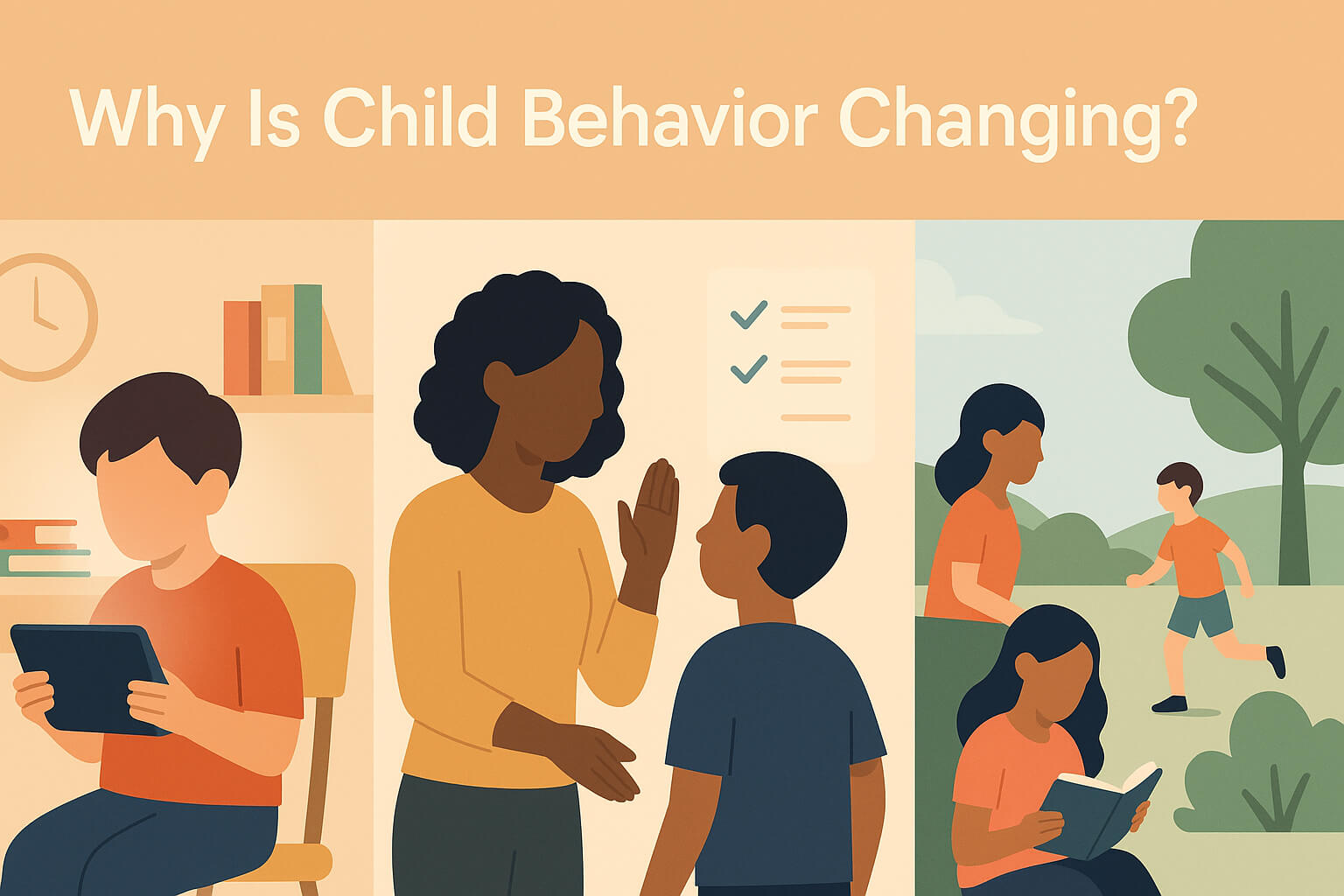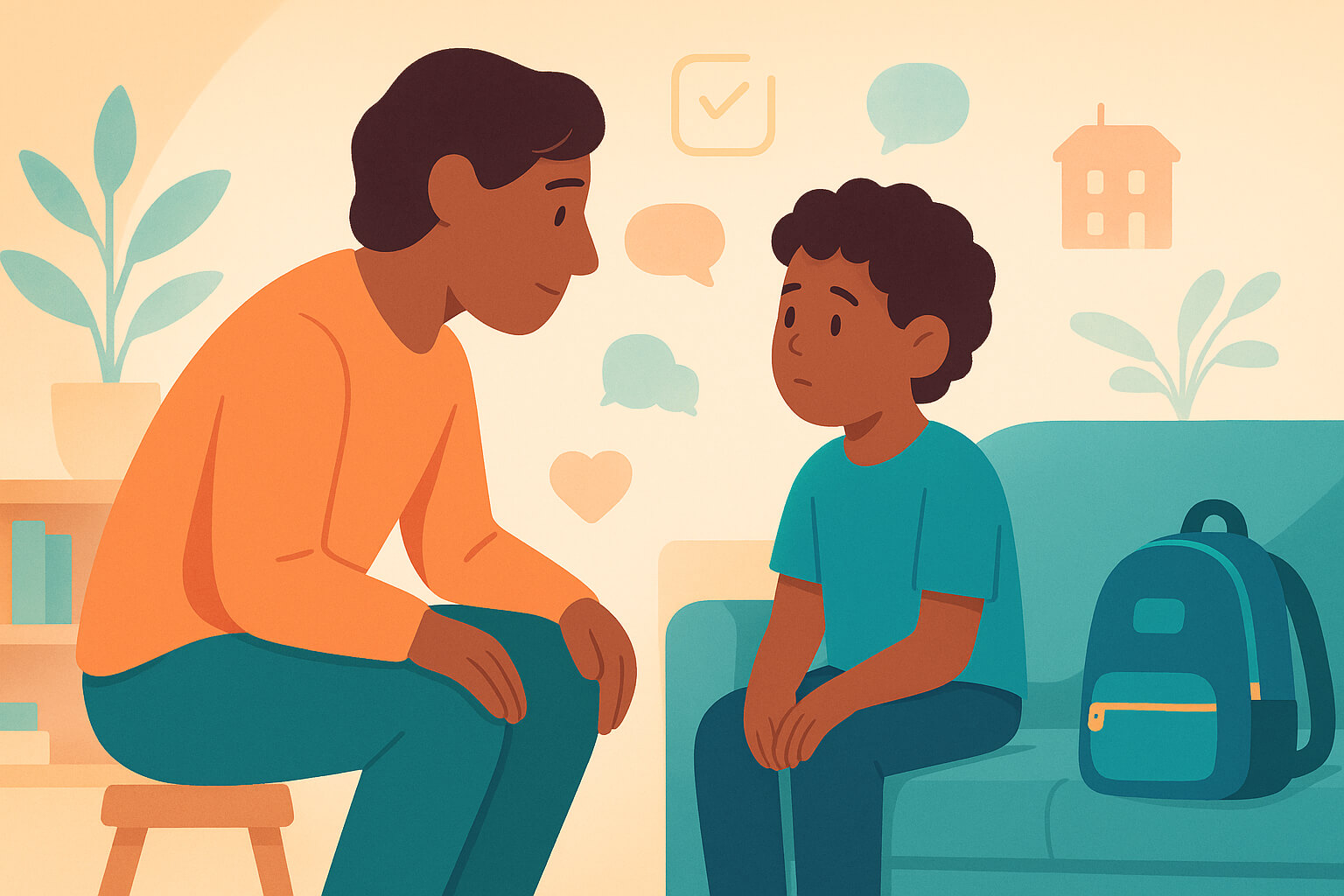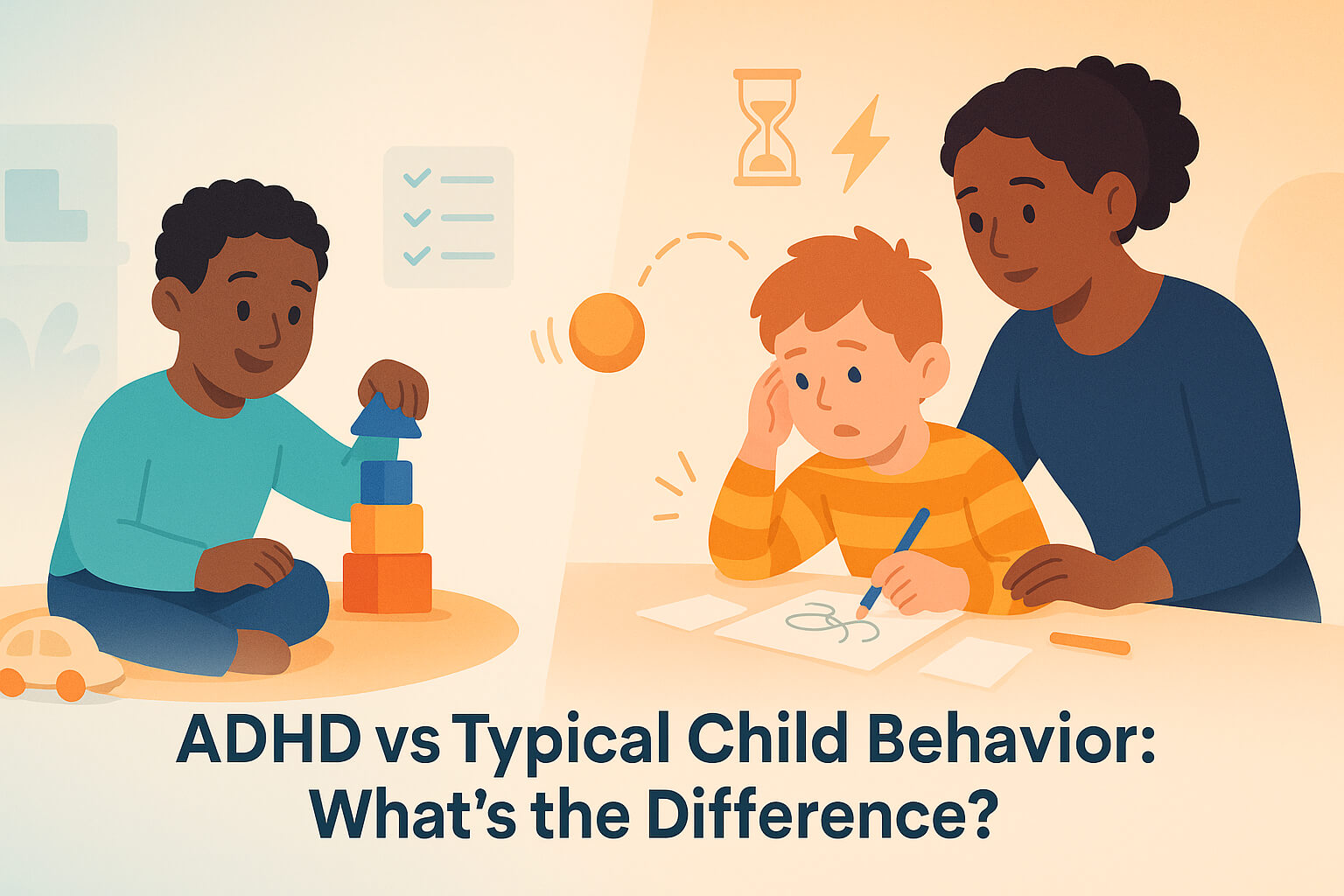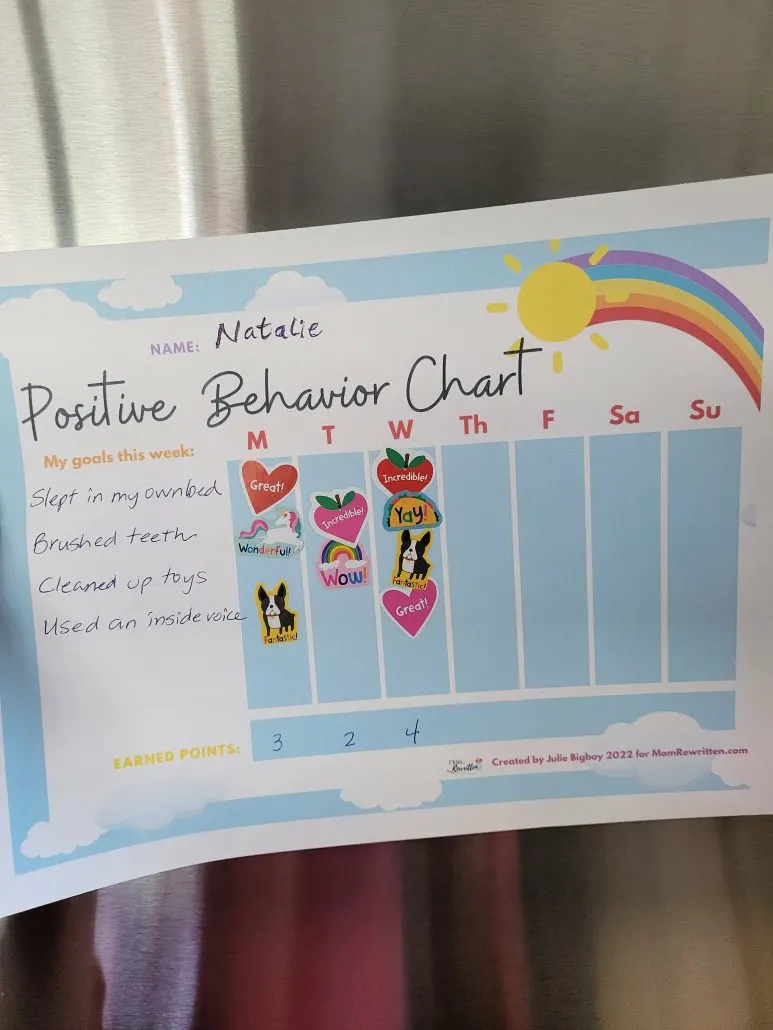How to Guide Children’s Behaviour in a Positive Way Have you ever felt frustrated trying to manage your child’s behavior, wondering if there’s a better way to handle those difficult moments? You’re not alone.
Guiding children in a way that feels calm, effective, and loving can often feel like an impossible balancing act. But here’s the good news: it doesn’t have to be. Imagine being able to redirect tantrums, encourage cooperation, and build a stronger bond with your child—all without yelling, threats, or guilt.
Sounds amazing, right? The key lies in using positive, practical strategies that not only shape behavior but also nurture your child’s emotional well-being. In this guide, you’ll discover simple, science-backed techniques that work. No complicated theories or harsh discipline—just real, actionable tips that will leave you feeling more confident and connected as a parent. Ready to transform those daily struggles into opportunities for growth and connection? Let’s get started with positive parenting approaches that align with current pediatric guidance.
Building Trust And Connection
Guiding your child’s behavior starts with a strong foundation of trust and connection. When your child feels safe and understood, they’re more likely to cooperate and communicate openly. It’s not about being a “perfect” parent but about showing up consistently with care and attention.
Be Present, Not Just Physically
Your child knows when your body is there, but your mind is elsewhere. Put your phone down during conversations. Make eye contact and truly listen to what they’re saying—even if it’s about their favorite cartoon.
When you give them undivided attention, they feel valued. This simple act builds a bridge of trust that makes them more open to guidance. Creating screen-free family times and focusing on the quality—not just the quantity—of digital interactions are consistent with current pediatric media guidance (AAP screen time guidance).
Respect Their Feelings
It’s tempting to dismiss their emotions as “not a big deal,” but to them, everything feels big. When they’re upset, say something like, “I see you’re really frustrated,” instead of “Calm down.”
Validating their feelings shows you care about their perspective. This encourages them to share with you rather than shutting down or acting out.
Follow Through On Promises
If you say, “We’ll go to the park after lunch,” make sure it happens. Broken promises can chip away at the trust you’re building.
If plans change, explain why clearly and apologize. Your honesty teaches them accountability and strengthens your connection.
Share A Bit Of Yourself
Kids love hearing stories about your childhood or your favorite moments from the day. It makes you relatable and shows that you’re human too.
Sharing your own challenges, in an age-appropriate way, can also teach them how to handle similar situations. This creates a bond that goes beyond the typical parent-child dynamic.
Ask For Their Input
Instead of telling them what to do all the time, ask for their thoughts. For example, if bedtime is a struggle, ask, “What do you think would make bedtime easier for you?”
When they feel their opinions matter, they’re more likely to collaborate. This small gesture can lead to big changes in how they respond to your guidance.
End Each Day With Connection
Before they sleep, take a few moments to ask about their day. What made them happy? Was anything hard?
These bedtime chats can become a ritual they look forward to. It’s a simple way to reinforce your bond daily and wrap up the day on a positive note.
Building trust and connection takes time, but every small effort adds up. What steps will you take today to strengthen your relationship with your child?

Credit: brookespublishing.com
Setting Clear Expectations
Children thrive when they know what is expected of them. Clear expectations provide structure and guidance, making them feel secure and understood. By setting boundaries in a positive way, children can learn self-discipline and respect for others.
Parents and caregivers play a key role in shaping behavior. Communicating expectations effectively can help children understand rules and make better choices. Below are practical tips to set clear expectations for children.
Define Rules That Are Easy To Follow
Keep rules simple and age-appropriate. Young children need clear and straightforward guidelines. Avoid using complex language that might confuse them. For example, instead of saying “Always be nice,” say “Use kind words with your friends.” This helps children understand exactly what to do.
Focus on positive phrasing. Instead of saying, “Don’t run indoors,” say, “Walk inside the house.” Positive language encourages cooperation and reduces resistance.
Explain The Reasons Behind Expectations
Children are more likely to follow rules if they understand the reasons. Share why certain behaviors are important. For instance, explain that cleaning up toys keeps everyone safe and prevents accidents.
Use real-life examples to make your point clear. This helps children connect actions to consequences in their daily lives.
Be Consistent With Your Expectations
Consistency is key to guiding behavior. Stick to the rules you set and apply them every day. Inconsistency can confuse children and lead to frustration.
If a rule is broken, address it calmly. Remind children of the expectation and why it matters. Consistent reinforcement helps children learn boundaries over time.
Use Visual Cues To Reinforce Rules
Visual aids can make expectations easier to remember. Create a chart with simple rules and display it in a visible spot. Add pictures for younger children who may not read yet.
Point to the chart as a reminder during daily routines. This helps children connect the visual cues to their actions.
Encourage Open Communication
Invite children to share their thoughts about rules. Listen to their ideas and feelings. This makes them feel heard and valued.
Engage in two-way conversations. This builds trust and helps children understand that rules are for their well-being.
Encouraging Positive Choices
Encouraging positive choices in children is about teaching them to navigate their emotions and actions thoughtfully. It’s not just about saying “yes” or “no” to behaviors—it’s about guiding them to understand why certain decisions are better than others. With the right approach, you can empower your child to make good decisions that benefit themselves and others.
Provide Clear Expectations
Children thrive when they know what’s expected of them. Be specific about what you want them to do, rather than focusing on what they shouldn’t do. For instance, instead of saying, “Don’t yell,” say, “Use your calm voice when you’re upset.”
It helps to explain why the behavior matters. If your child knows their actions impact others, they’ll likely feel more motivated to choose wisely. When they understand the “why,” they start to internalize positive behavior.
Offer Choices, Not Commands
No one likes to feel controlled, and kids are no different. Giving them choices helps them feel empowered and respected. Instead of saying, “Clean your room now,” try, “Would you like to clean your room before dinner or after?”
This approach teaches responsibility while giving them a sense of autonomy. It also reduces power struggles, as they feel more involved in decision-making.
Notice And Praise Positive Behavior
Children repeat what gets noticed. When you see your child making a good choice, let them know. Say something like, “I noticed you shared your toy with your sibling—that was very kind.”
Be specific in your praise so they know exactly what they did right. This builds their confidence and encourages them to make similar choices in the future.
Model The Behavior You Want To See
Kids learn more from what you do than what you say. If you want your child to show patience, demonstrate patience yourself. When you make a mistake, admit it and show how to fix it. This teaches them that making good choices isn’t about being perfect—it’s about trying and learning.
Your actions set the tone for their behavior. Ask yourself, “Am I showing the kind of choices I want my child to make?”
Teach Problem-solving Skills
When children face challenges, guide them to think through their options. Ask questions like, “What do you think will happen if you choose this?” or “How do you think your friend will feel if you do that?”
This helps them weigh the consequences of their actions. Over time, they’ll get better at evaluating situations and making thoughtful decisions independently.
Be Patient With Their Progress
Positive behavior doesn’t happen overnight. Children will make mistakes, and that’s okay—it’s part of learning. Focus on progress, not perfection, and celebrate even small steps in the right direction.
Ask yourself: How can I support my child today in making just one positive choice? That one choice could spark a chain reaction of better decisions tomorrow.
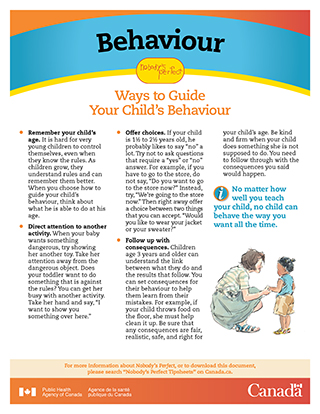
Credit: www.canada.ca
Using Praise And Reinforcement
Guiding children’s behavior positively helps build their confidence and self-esteem. Praise and reinforcement are effective tools for encouraging good behavior. They show children that their efforts are noticed and valued. When used consistently, they can motivate children to repeat positive actions.
What Is Effective Praise?
Effective praise is specific and genuine. It focuses on the effort, not just the result. For example, say, “You worked hard to finish your homework today!” This helps children understand what they did well. Avoid vague phrases like “Good job” that lack detail.
Why Reinforcement Matters
Reinforcement helps children learn which behaviors are acceptable. Positive reinforcement can be verbal, physical, or material. Verbal reinforcement includes kind words or encouragement. A smile, a hug, or a high-five are physical reinforcements. Material rewards, like stickers, can also motivate younger children.
How To Balance Praise And Reinforcement
Balance praise and reinforcement to avoid overuse. Excessive praise may reduce its impact over time. Be mindful of rewarding effort and not just outcomes. For example, praise a child for trying a new skill, even if they make mistakes. This encourages persistence and learning.
Examples Of Positive Reinforcement
Set clear goals and celebrate small achievements. For instance, praise a child for cleaning up toys without being asked. Offer a fun activity, like extra playtime, as a reward. Recognize their progress with simple gestures, like a thumbs-up or kind words.
Encouraging Self-motivation
Use praise to help children feel proud of their efforts. Gradually reduce material rewards to encourage self-motivation. Teach children to recognize their own achievements. This fosters independence and helps them feel capable.
Handling Challenging Situations
Handling challenging situations with children can feel overwhelming, but it’s also an opportunity to teach valuable life skills. When your child throws a tantrum, refuses to listen, or tests boundaries, your response shapes how they learn to manage emotions and behaviors. Let’s dive into some practical strategies to guide their behavior positively, even during tough moments.
Stay Calm And Collected
Your reaction sets the tone for how the situation unfolds. If you raise your voice or act frustrated, you might escalate the tension. Instead, take a deep breath and keep your voice steady. This shows your child how to handle stress calmly.
Imagine this: Your child refuses to put away their toys after playtime. Instead of yelling, kneel down to their level and say, “Let’s clean up together.” Cooperation often works better than command.
Set Clear Expectations
Children thrive on routine and clarity. Let them know in advance what you expect, especially during challenging situations. If you’re heading out to a restaurant, remind them to use their indoor voice and stay seated.
Make expectations simple and age-appropriate. “Let’s use gentle hands with our friends” is easier for a toddler to understand than vague instructions like “Be nice.”
Redirect Negative Behavior
Sometimes, kids act out because they’re bored, frustrated, or seeking attention. Instead of focusing on what they’re doing wrong, guide them toward a positive activity. If your child is throwing toys, suggest building something with blocks instead.
Turning their energy into something constructive can stop the behavior without making them feel punished. This keeps the mood lighter and teaches them better ways to express themselves.
Use Positive Reinforcement
Catch your child doing something good and let them know you noticed. Positive reinforcement encourages them to repeat the behavior. If they share a toy, say, “I love how you shared with your friend. That was kind.”
A sticker chart or verbal praise can make a huge difference in motivating good behavior. The key is consistency—reward the behavior every time, so they understand what’s expected.
Empathize With Their Feelings
Children often act out because they don’t know how to express their emotions. Show them you understand their feelings by saying things like, “I can see you’re upset because you wanted more playtime.”
This validates their emotions while teaching them words for what they’re feeling. When kids feel heard, they’re more likely to calm down and cooperate.
Ask Yourself: What’s Behind The Behavior?
Every behavior has a reason. Is your child tired, hungry, or overwhelmed? Addressing the root cause can help prevent the behavior from repeating. If they’re cranky after school, maybe they need a snack or quiet time before jumping into homework.
When you understand the “why,” you can respond with empathy instead of frustration. This builds trust between you and your child.
Guiding your child’s behavior in tough situations isn’t about controlling them; it’s about teaching them skills to manage their emotions and actions. How will you handle the next challenging moment? Will you stay calm, set clear expectations, or use positive reinforcement? Small changes can lead to big improvements in how your child responds to you.
Safety note: Avoid physical punishment and harsh verbal discipline; pediatric experts recommend positive strategies instead (AAP guidance). For step-by-step help using time-out with toddlers and preschoolers, see the CDC’s Essentials for Parenting.
Fostering Emotional Growth
Guiding a child’s behavior involves more than teaching rules. It also requires nurturing their emotional development. Children who understand and express emotions grow into empathetic and confident individuals. Positive guidance in this area creates a strong foundation for healthy relationships and decision-making skills.
Emotional growth helps children navigate challenges and build resilience. Supporting this growth strengthens their ability to manage feelings and communicate effectively. Below are ways to foster emotional growth while guiding their behavior positively.
Understanding Emotional Needs
Children need to feel heard and understood. Pay attention to their feelings, even the small ones. Acknowledge their emotions without judgment. Use phrases like, “I see you’re upset,” to validate their experiences. This helps them feel safe to express themselves openly.
Create an environment where they can share emotions freely. This builds trust and strengthens your bond with them.
Teaching Emotional Vocabulary
Help children name their emotions. Teach words like happy, sad, angry, or frustrated. Labeling emotions helps them understand what they feel inside. Use everyday situations to introduce new emotional words. For example, say, “You seem excited about your project.”
With practice, they will describe their emotions more effectively. This skill reduces frustration and promotes better communication.
Modeling Emotional Regulation
Children learn by observing adults. Show them how to handle emotions calmly. If you feel frustrated, demonstrate taking deep breaths or pausing to think. Explain your actions to help them understand. For example, say, “I’m feeling overwhelmed, so I’m taking a moment to breathe.”
Modeling healthy coping mechanisms teaches them to manage their feelings constructively.
Encouraging Empathy
Help children see things from another person’s perspective. Use stories or real-life situations to discuss others’ feelings. For example, ask, “How do you think your friend felt when you shared your toy?” This encourages them to think about others’ emotions.
Practicing empathy improves their social skills and strengthens their relationships.
Celebrating Emotional Milestones
Acknowledge their efforts to manage emotions or show empathy. Praise them when they express feelings constructively. For example, say, “I’m proud of you for telling me how you felt.” Positive reinforcement motivates them to continue practicing these skills.
Celebrating small emotional achievements boosts their confidence and encourages growth.
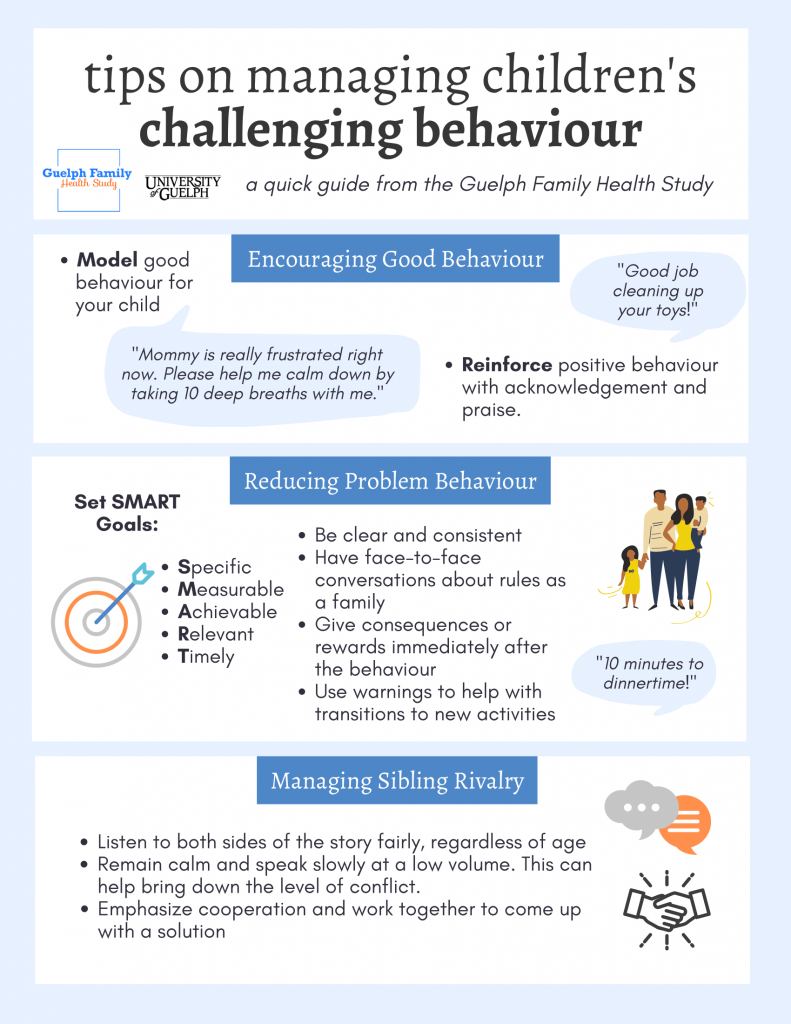
Credit: guelphfamilyhealthstudy.com
Frequently Asked Questions
What Is One Way You Can Guide A Child’s Behavior In A Positive Way?
Use positive reinforcement by praising good behavior to encourage repetition. Set clear expectations and model desired actions consistently.
What Strategies Do You Use To Guide Children’s Behaviour?
We use positive reinforcement, set clear expectations, and model appropriate behavior. We encourage open communication and teach problem-solving skills.
How Would You Encourage A Child To Behave Positively?
Encourage positive behavior by praising good actions, setting clear rules, being a role model, and using rewards. Offer consistent guidance, practice patience, and listen to their concerns. Create a supportive environment and teach problem-solving skills. Focus on positive reinforcement to build confidence and nurture their emotional growth.
What Is An Example Of Positive Child Guidance?
An example of positive child guidance is praising good behavior, such as saying, “Great job sharing your toys with others!”
Conclusion
Guiding children’s behavior positively builds trust and strengthens relationships. Small, consistent efforts make a big difference over time. Use clear communication to set expectations they understand. Encourage good behavior by praising their efforts and achievements. Stay patient during challenging moments and lead by example.
Positive guidance helps children grow into confident, kind individuals. Remember, your actions teach them more than your words. Keep fostering a supportive and loving environment. A calm and caring approach creates lasting positive change for everyone involved. If you have concerns about your child’s behavior or safety, consult your pediatrician for personalized guidance.

